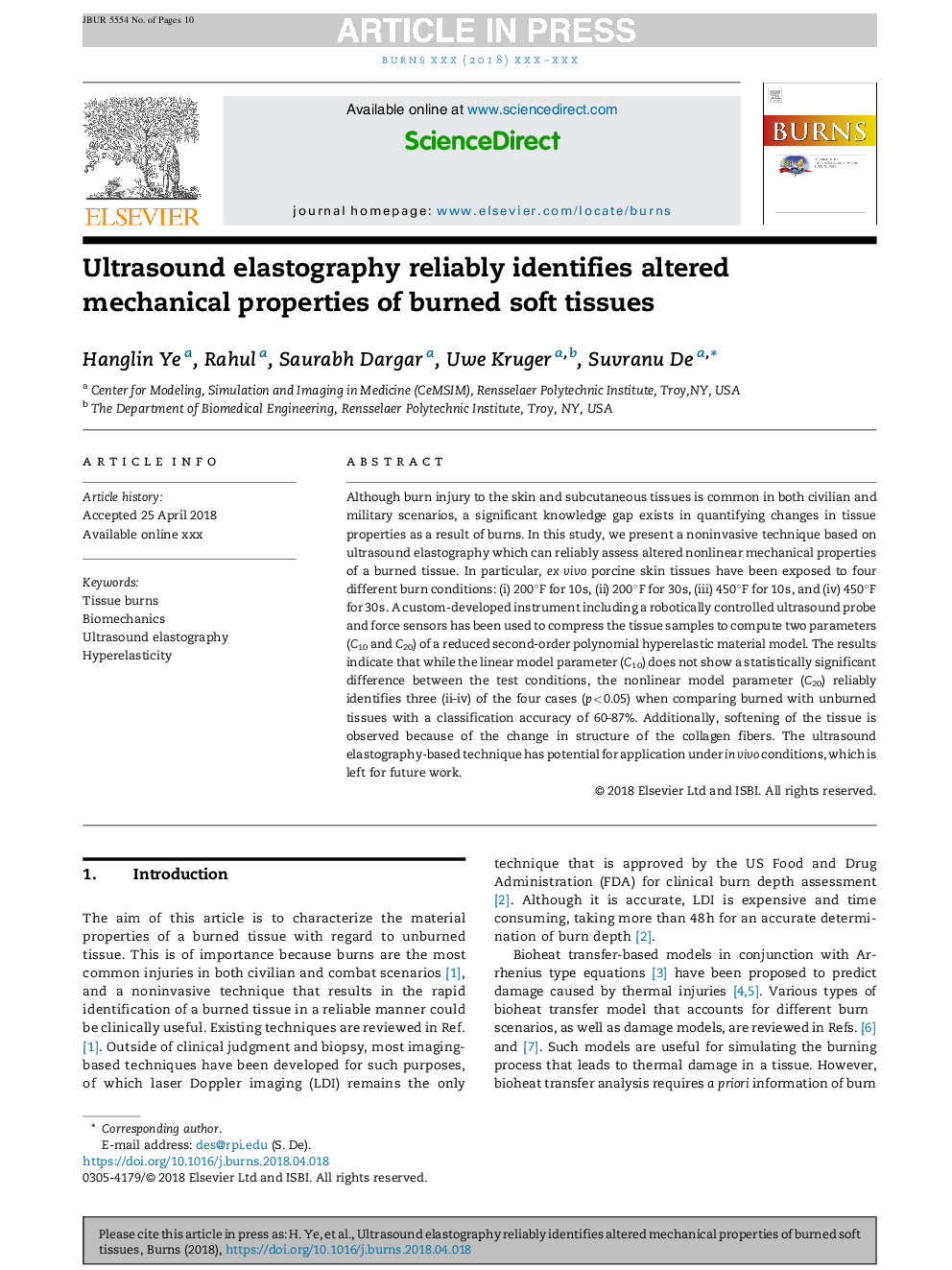| Article ID | Journal | Published Year | Pages | File Type |
|---|---|---|---|---|
| 10215873 | Burns | 2018 | 10 Pages |
Abstract
Although burn injury to the skin and subcutaneous tissues is common in both civilian and military scenarios, a significant knowledge gap exists in quantifying changes in tissue properties as a result of burns. In this study, we present a noninvasive technique based on ultrasound elastography which can reliably assess altered nonlinear mechanical properties of a burned tissue. In particular, ex vivo porcine skin tissues have been exposed to four different burn conditions: (i) 200 °F for 10 s, (ii) 200 °F for 30 s, (iii) 450 °F for 10 s, and (iv) 450 °F for 30 s. A custom-developed instrument including a robotically controlled ultrasound probe and force sensors has been used to compress the tissue samples to compute two parameters (C10 and C20) of a reduced second-order polynomial hyperelastic material model. The results indicate that while the linear model parameter (C10) does not show a statistically significant difference between the test conditions, the nonlinear model parameter (C20) reliably identifies three (ii-iv) of the four cases (p < 0.05) when comparing burned with unburned tissues with a classification accuracy of 60-87%. Additionally, softening of the tissue is observed because of the change in structure of the collagen fibers. The ultrasound elastography-based technique has potential for application under in vivo conditions, which is left for future work.
Related Topics
Health Sciences
Medicine and Dentistry
Critical Care and Intensive Care Medicine
Authors
Hanglin Ye, Rahul Rahul, Saurabh Dargar, Uwe Kruger, Suvranu De,
